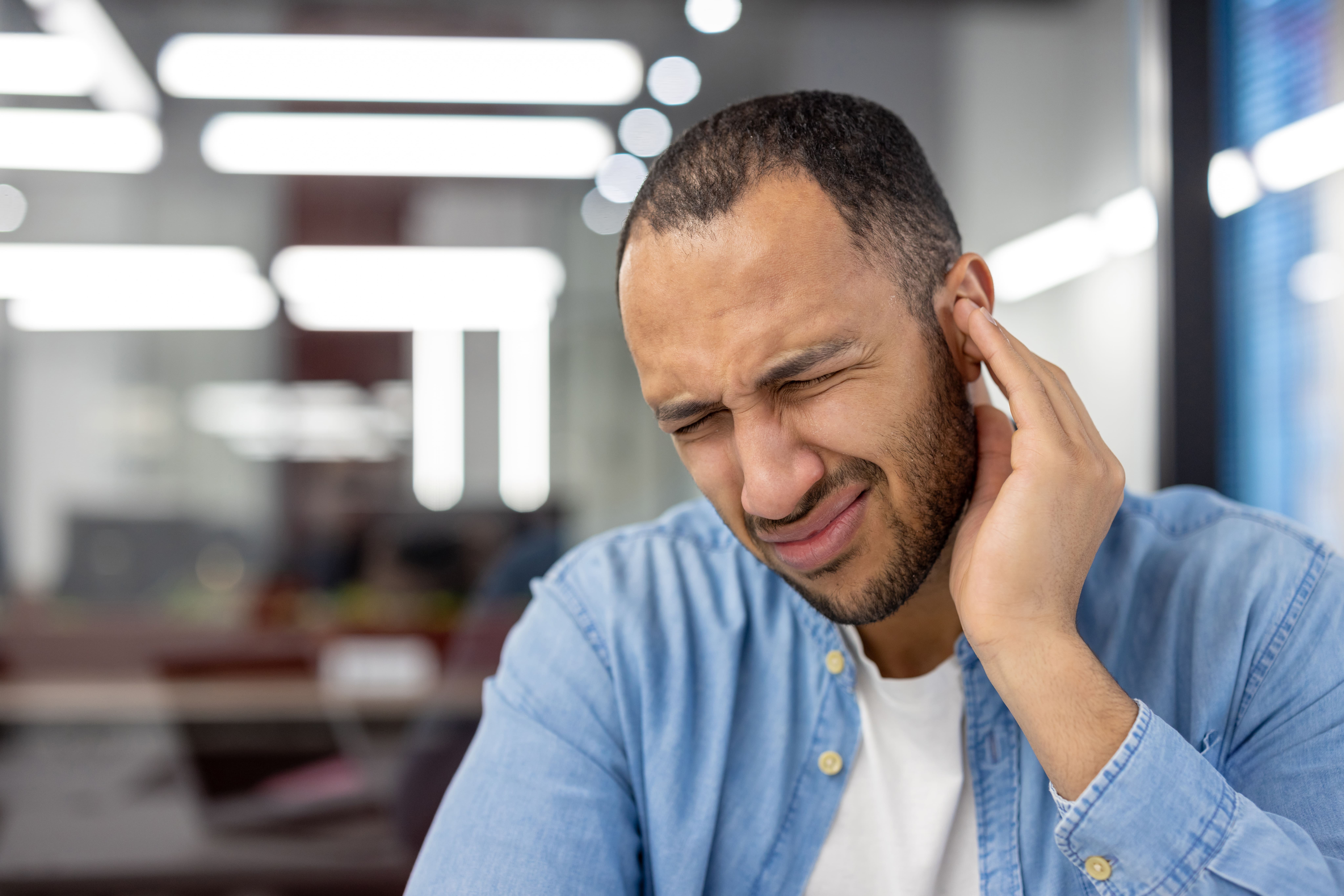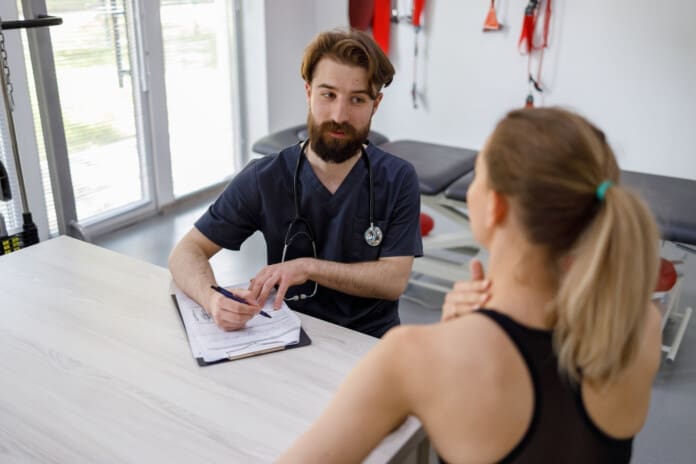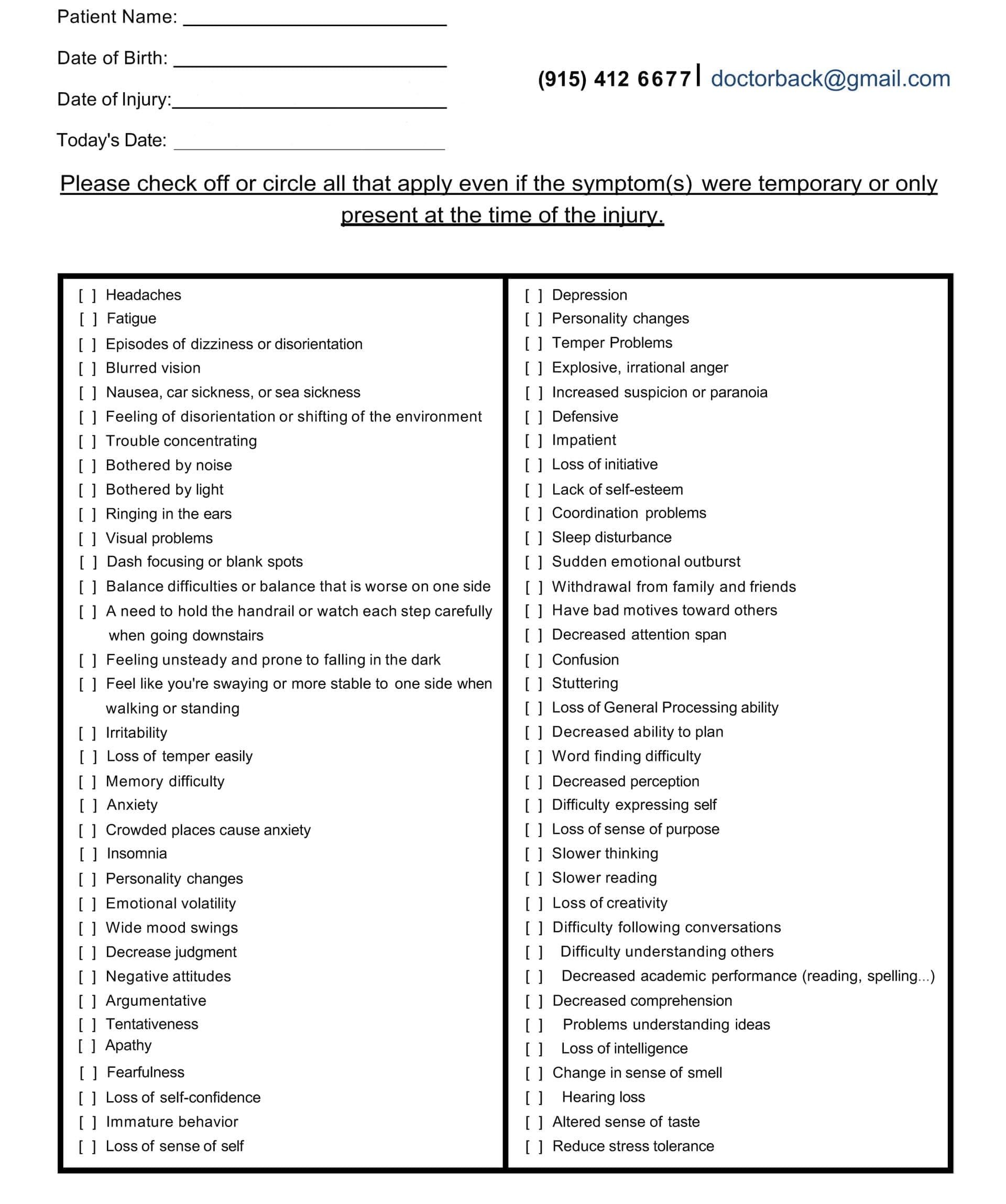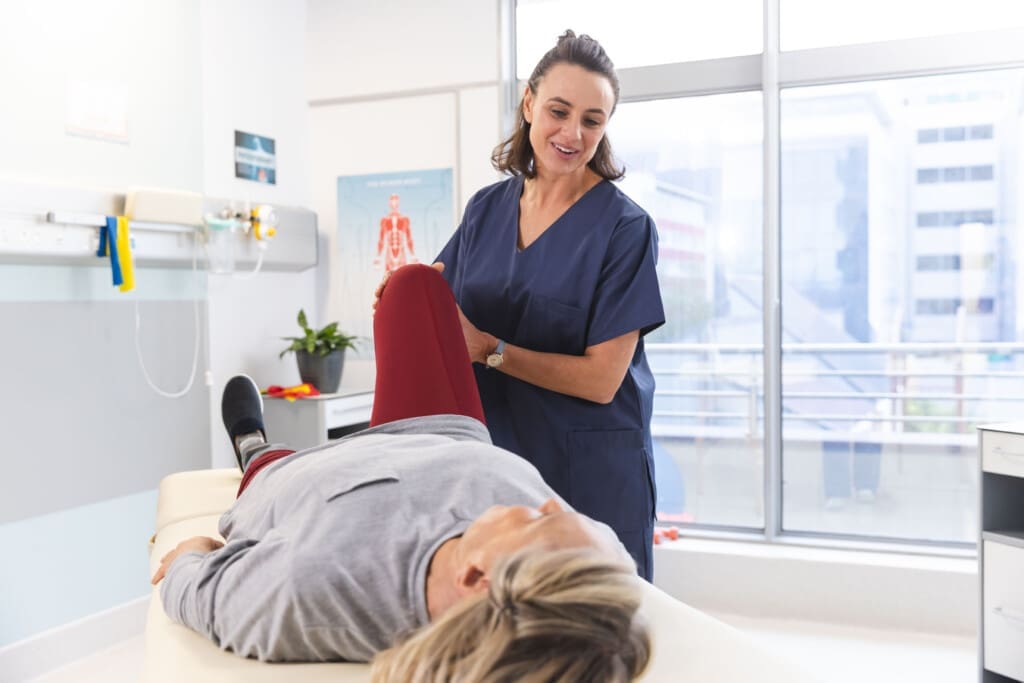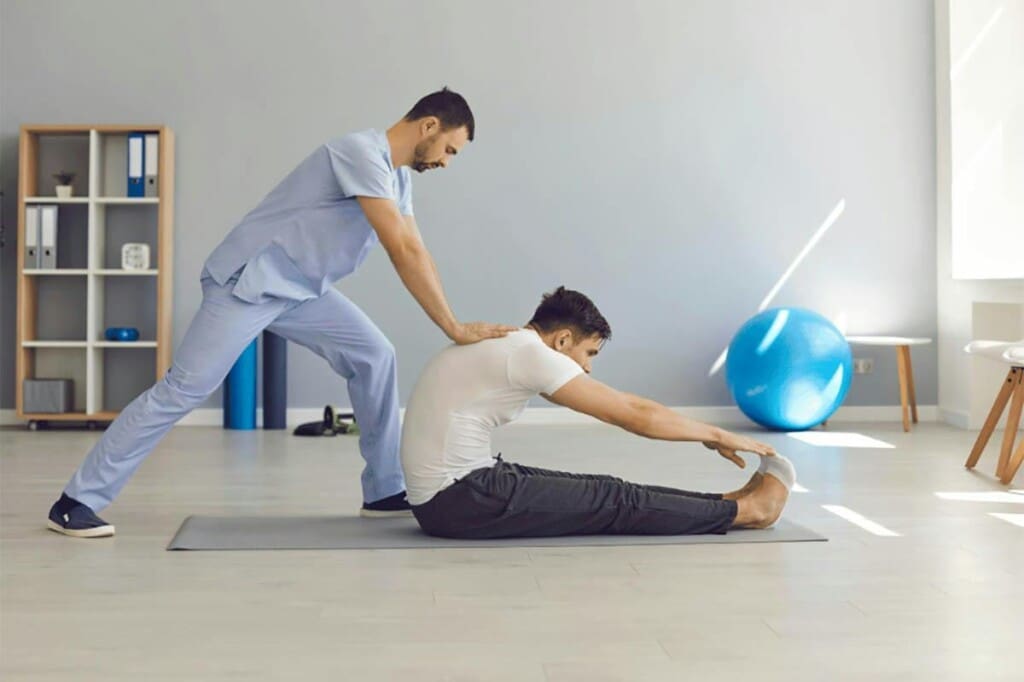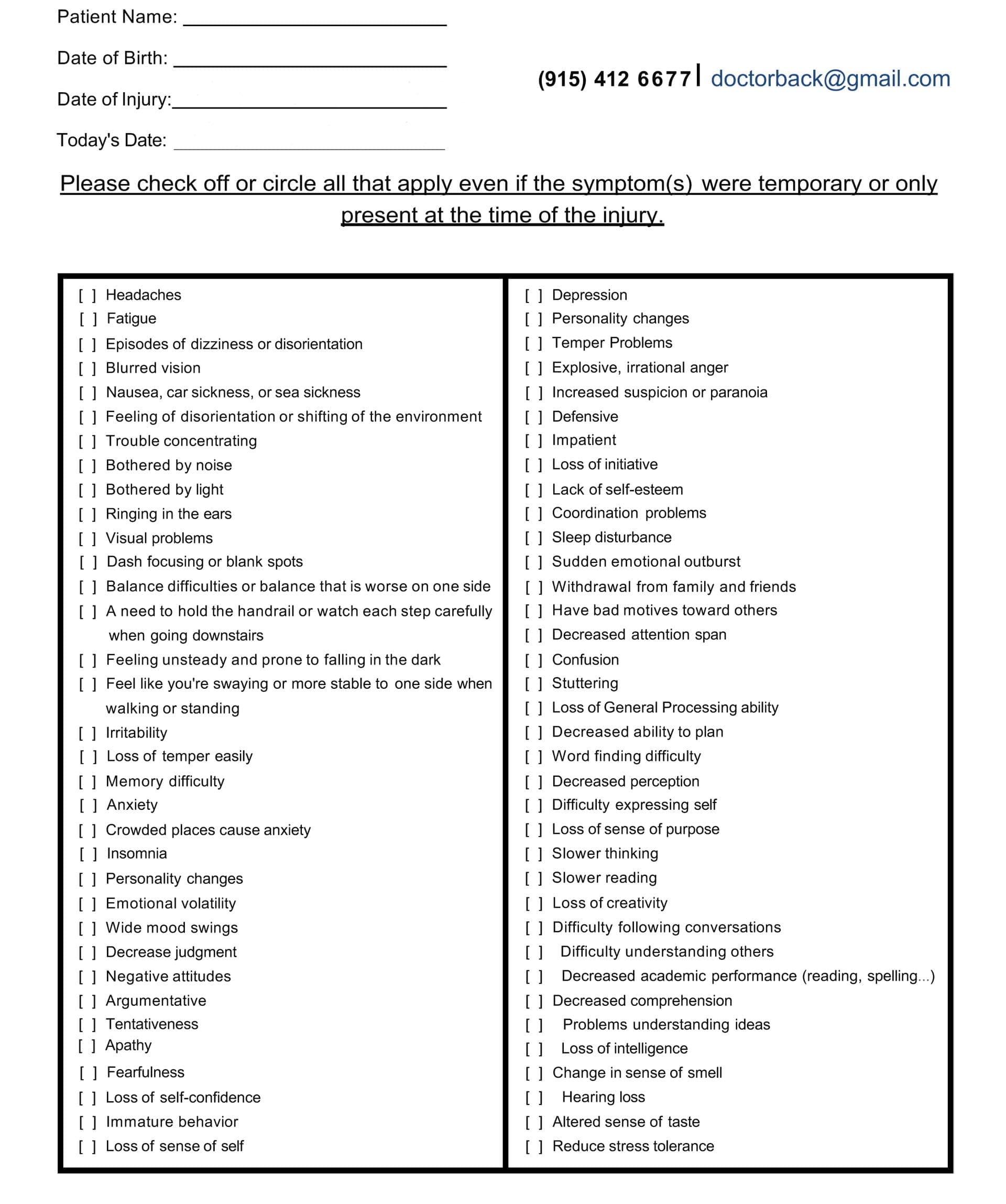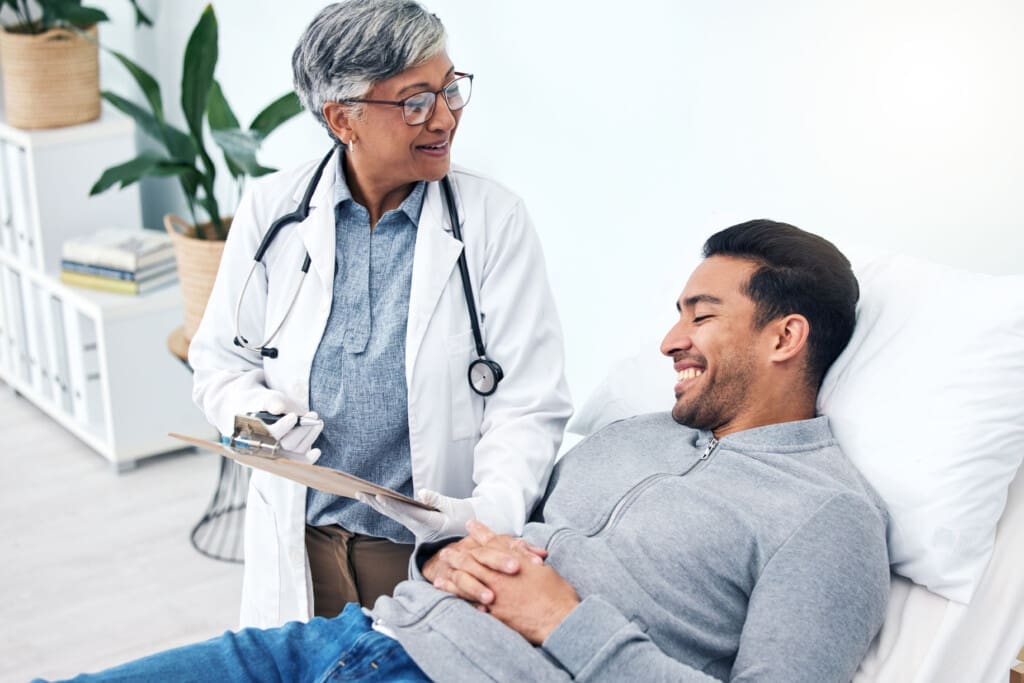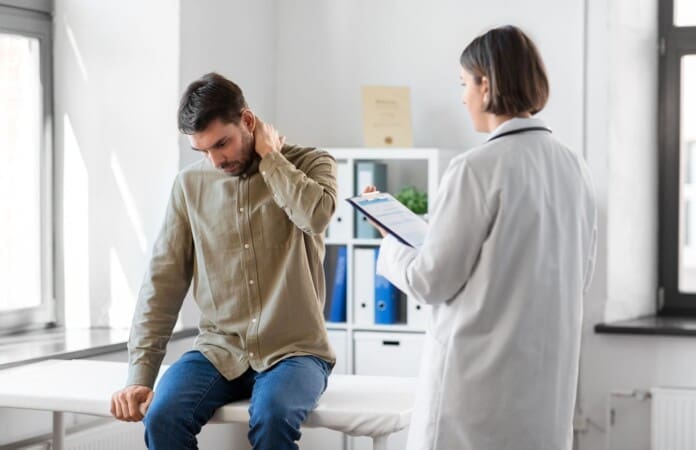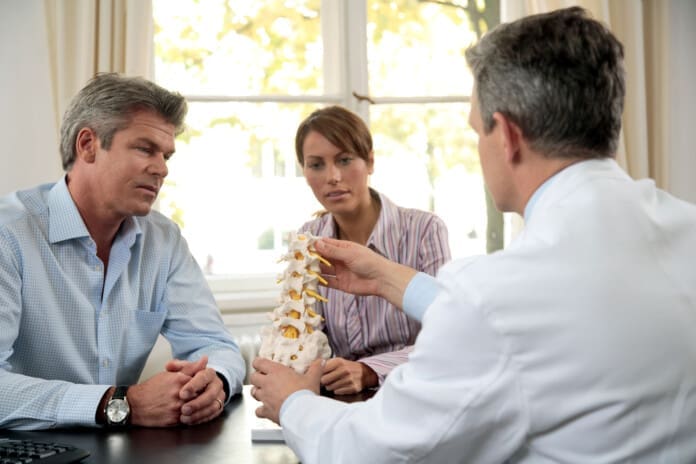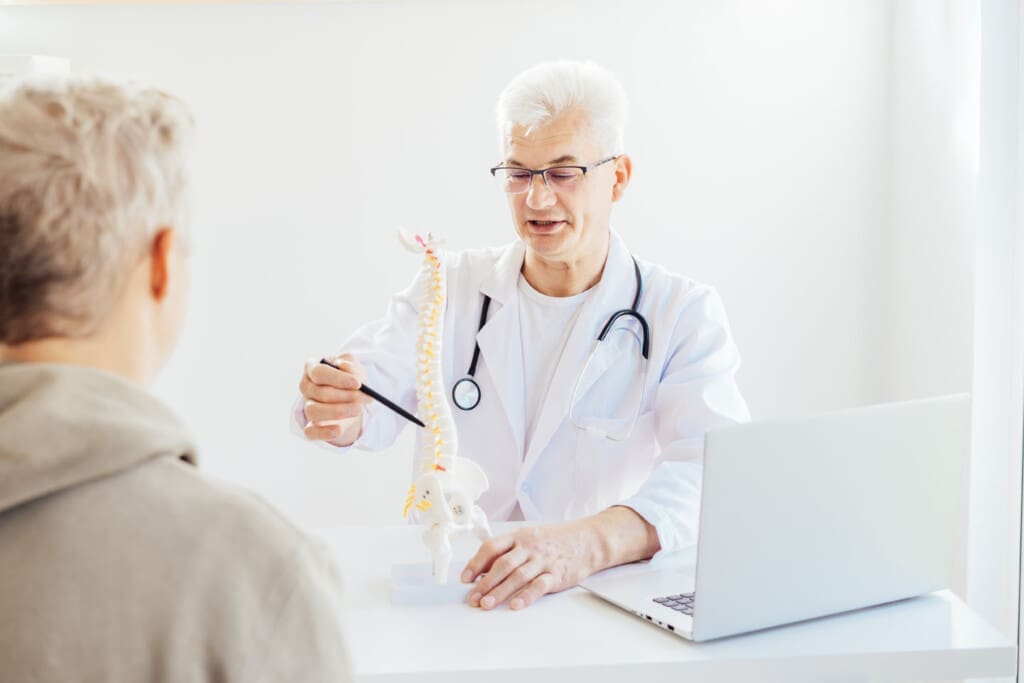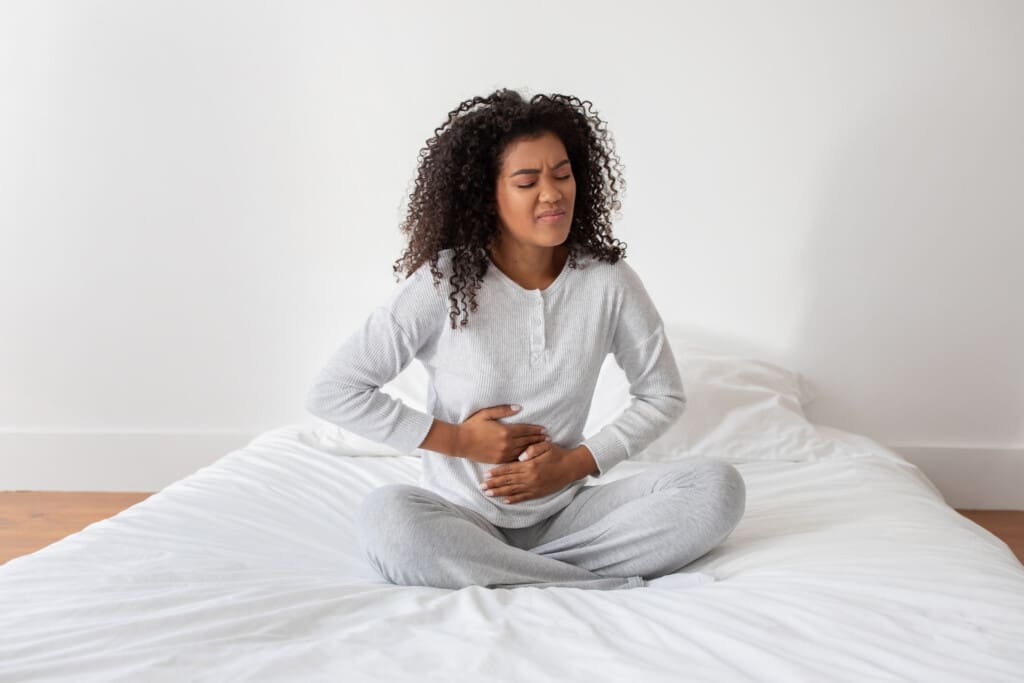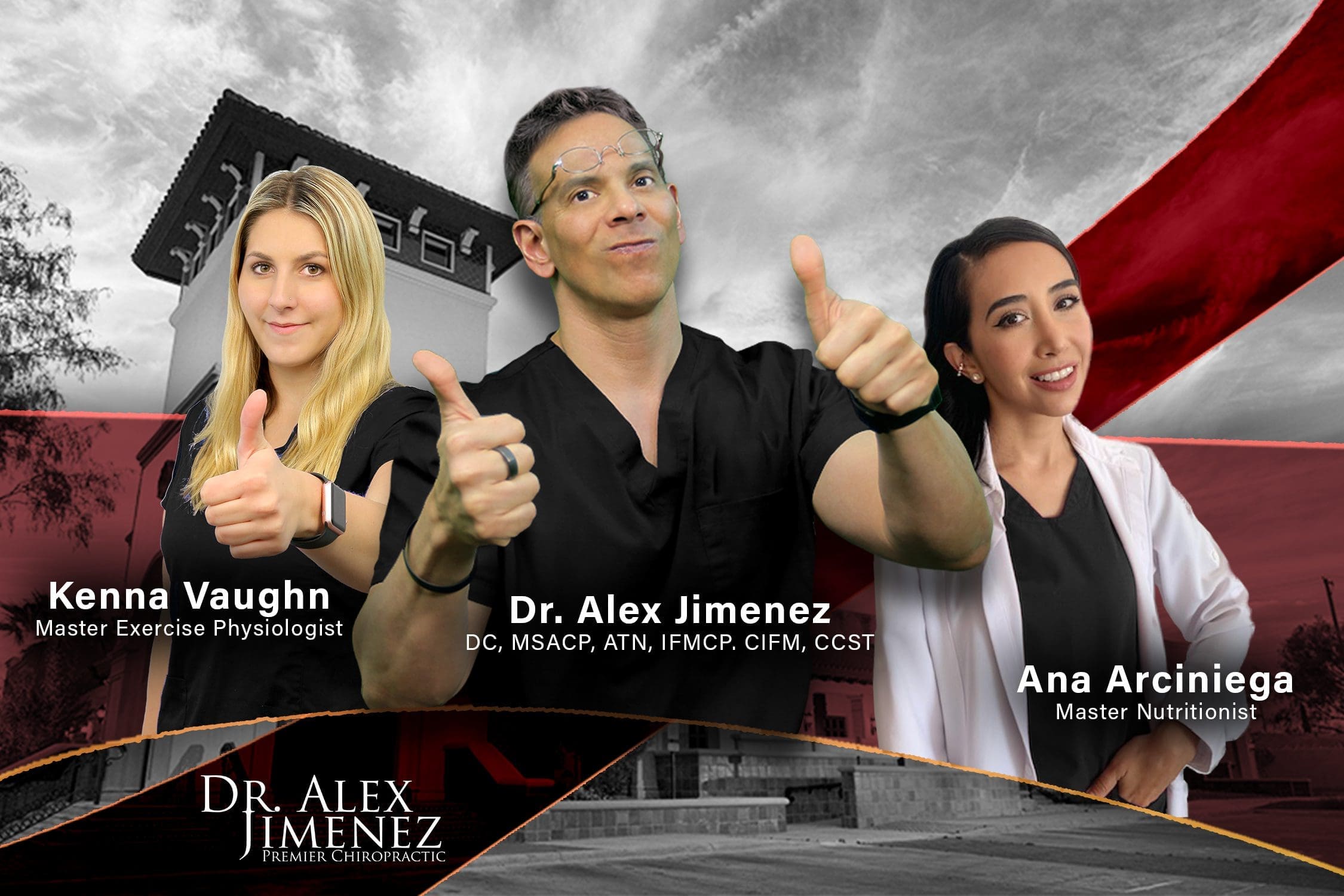Understanding CPT2 Deficiency: A Comprehensive Guide to Metabolic Health, Musculoskeletal Impact, and Holistic Treatment Approaches
Carnitine palmitoyltransferase 2 (CPT2) deficiency is a complex metabolic disorder that impairs the body’s ability to convert fats into energy, particularly when the body requires more energy. This genetic condition affects thousands of people worldwide and makes things much more challenging than just producing energy. The condition affects many parts of the body, but the musculoskeletal system is the most affected. This can cause muscle weakness, pain, and other issues that can significantly impact quality of life. Learning how CPT2 works in the body, recognizing the signs of deficiency, and exploring various treatment options can help individuals manage their symptoms and maintain their health.
What is CPT2 and How Does It Function in the Body?
Carnitine palmitoyltransferase 2 is a crucial enzyme essential for generating energy within cells. This enzyme is part of a complex transport system that facilitates the movement of long-chain fatty acids into the mitochondria, which are the cell’s primary energy-producing organelles (MedlinePlus Genetics, 2008). To understand this process, consider how the body obtains energy from various types of fuel.
The body obtains energy from various sources, depending on its level of activity, dietary intake, and the amount of energy it needs to expend. Carbohydrates give you quick energy for short bursts of activity, but fats become more important when you exercise for a long time, go without food for a while, or need to keep your energy up for a long time. To use fats for energy, big fat molecules called triglycerides must be broken down into smaller units called fatty acids. These fatty acids must then enter the mitochondria to go through a process called beta-oxidation (Lehmann et al., 2017).
This is where CPT2 becomes very important. The fatty acid transport system operates in a carefully orchestrated sequence of steps. The enzyme carnitine palmitoyltransferase 1 (CPT1) facilitates the attachment of long-chain fatty acids in the cell’s main compartment to a molecule called carnitine. This forms a substance called long-chain acylcarnitine, which can pass through the outer mitochondrial membrane. The acylcarnitine must cross the inner mitochondrial membrane through a transporter called carnitine-acylcarnitine translocase after it gets into the mitochondrial intermembrane space. Finally, CPT2, located on the inner mitochondrial membrane, removes carnitine and prepares the fatty acid for oxidation (Texas Department of State Health Services, n.d.).
CPT2’s significance is particularly evident in specific physiological conditions. When you fast and your body’s carbohydrate stores are depleted, it must rely more on fatty acid oxidation to maintain stable blood sugar levels and provide energy to essential organs. This process is very important for the liver, heart, and skeletal muscles. Likewise, during extended physical exertion exceeding 90 minutes, muscle glycogen reserves are depleted, necessitating an increased dependence on fatty acids for energy (Viscomi et al., 2021). Under normal circumstances, fatty acids provide about 60% of the energy that the heart muscle needs. This makes CPT2 function very important for heart health.
This enzyme functions effectively in people with normal CPT2 function, so it often goes unnoticed for its crucial role. The enzyme is highly stable at normal body temperature and functions effectively without significant interference from regulatory molecules under normal conditions. This allows the body to switch between different fuel sources without any issues, depending on its needs at the time, its level of activity, and its overall health (Motlagh et al., 2016).
Understanding CPT2 Deficiency: Types and Mechanisms
CPT2 deficiency occurs when genetic changes alter the production or function of the carnitine palmitoyltransferase 2 enzyme. This genetic condition is autosomal recessive, meaning that individuals must inherit two copies of the mutated gene—one from each parent—to develop the disease (Orphanet, 2022). There are three distinct clinical forms of CPT2 deficiency, as the severity and presentation of the condition depend on the specific genetic mutations involved.
The myopathic form is the most common and least severe manifestation of CPT2 deficiency. It accounts for about 86 percent of all diagnosed cases. This type typically appears in childhood or adolescence, but some individuals may not exhibit any signs of it until they are adults. The myopathic form does not cause muscle weakness that persists between episodes, so people with it can usually go about their daily lives normally. Nonetheless, specific triggers can induce acute episodes characterized by intense muscle pain, weakness, and the risk of severe muscle degradation (Joshi et al., 2014).
Approximately 8% of cases present with the severe infantile hepatocardiomuscular form, typically manifesting in the first year of life. This type affects multiple organ systems, including the heart, liver, and skeletal muscles. Infants with this condition have low blood sugar levels that keep coming back, but they don’t make ketones normally. This is called hypoketotic hypoglycemia. They may develop liver problems, cardiomyopathy (a weakening of the heart muscle), irregular heartbeats, and muscle weakness that worsens over time. Because it affects more than one organ, this type is much more dangerous and needs a lot of medical care to avoid complications that could be life-threatening. (Muscular Dystrophy Association, 2024).
The lethal neonatal form is the most severe type, affecting about 6% of diagnosed cases. This type typically appears soon after birth and causes significant problems in multiple organ systems. Newborns who are affected often have structural problems in their brains and kidneys, as well as respiratory failure, liver failure, cardiomyopathy, and irregular heartbeats. Due to the severity of this type, people typically live for only a few days to a few months, even with extensive medical assistance (MedlinePlus Genetics, 2008).
The underlying mechanism responsible for these differing presentations pertains to the extent of residual enzyme activity. Over 60 distinct mutations in the CPT2 gene have been identified, each influencing enzyme function in a unique manner. The S113L mutation is the most common one found in the myopathic form. It happens in about 60 to 70 percent of people who have it. Studies have shown that this specific mutation does not substantially diminish the enzyme’s catalytic activity at physiological temperature. The mutation, on the other hand, renders the enzyme thermally unstable, which means it is more likely to be inactivated when body temperature rises or when metabolic demands increase (Motlagh et al., 2016).
This thermal instability explains why individuals with the myopathic form typically remain asymptomatic under normal circumstances but experience complications during fever, infections, or prolonged exercise—conditions that increase body temperature and metabolic demands. The enzyme also exhibits an unusual sensitivity to malonyl-CoA, a regulatory molecule that normally inhibits CPT1 but should have minimal effect on CPT2. In individuals with CPT2 deficiency, malonyl-CoA can inhibit the mutant enzyme, particularly under conditions that should enhance fatty acid oxidation, resulting in a metabolic crisis when the enzyme is critically needed (Lehmann et al., 2017).
Long-chain fatty acids cannot enter the mitochondria for oxidation when the CPT2 enzyme doesn’t function as well as it should. This causes two problems: not enough energy is produced, and long-chain acylcarnitines, which can be toxic, accumulate in cells and blood. The energy deficit is particularly detrimental to tissues that require a significant amount of energy, such as skeletal muscle, cardiac muscle, and liver tissue. Long-chain acylcarnitines can accumulate in cells and directly harm their structure and normal function, which is why people with CPT2 deficiency exhibit a wide range of symptoms (Wikipedia, 2005).
How CPT2 Deficiency Affects the Body and Musculoskeletal System
The consequences of CPT2 deficiency are extensive, notably affecting the musculoskeletal system. To understand these effects, we must examine both the short-term consequences of each episode and the potential long-term effects of the condition.
Muscle Symptoms and Rhabdomyolysis
The most noticeable and typical sign of CPT2 deficiency is its impact on skeletal muscle function. People with the myopathic form have repeated bouts of myalgia (muscle pain), which usually happens during or a few hours after certain triggers. The pain in the muscles can be mild to severe and affect large muscle groups. The pain typically occurs in the thigh, calf, back, and shoulder muscles, but can also affect any skeletal muscle (Cedars-Sinai, 2023).
Weakness in the muscles often accompanies the pain, but it is usually not as noticeable as the pain itself. The weakness typically affects the same muscle groups that are in pain, making it very difficult to move around during acute episodes. Individuals with the myopathic form typically retain normal muscle strength between episodes; however, some may experience reduced endurance relative to unaffected individuals (Muscular Dystrophy Association, 2024).
Rhabdomyolysis, which is when muscle tissue breaks down quickly, is the most serious complication of CPT2 deficiency. When rhabdomyolysis occurs, damaged muscle cells release their contents into the bloodstream. These include myoglobin (a protein that transports oxygen in muscle tissue), creatine kinase (an enzyme that facilitates energy production), potassium, and other cellular components. When myoglobin is present in the blood, it causes urine to appear rusty or brown. This is known as myoglobinuria, and it indicates significant muscle damage (Marques et al., 2023).
Rhabdomyolysis is dangerous to your health in more ways than just damaging your muscles. Myoglobin can build up in the kidneys, which can lead to acute kidney injury or even acute kidney failure, which requires dialysis. About 25% of people with CPT2 deficiency who have rhabdomyolysis also have some kind of kidney problem. When damaged muscle cells release a large amount of potassium, it can lead to hyperkalemia (high blood potassium), which can disrupt the heart’s normal rhythm and even cause life-threatening cardiac arrhythmias. The large release of cellular contents can also cause metabolic acidosis, electrolyte imbalances, and systemic inflammatory responses (Connecticut Department of Public Health, 2005).
Cardiovascular Implications
The myopathic variant of CPT2 deficiency predominantly affects skeletal muscle, whereas the severe infantile variant can have a marked impact on cardiac function. Fatty acid oxidation is a big part of how the heart muscle gets its energy, just like it is for skeletal muscle. In severe cases of CPT2 deficiency, impaired fatty acid oxidation can lead to cardiomyopathy, characterized by the weakening and enlargement of the heart muscle. People who are affected may have arrhythmias, which are irregular heartbeats that can range from harmless extra beats to life-threatening rhythm problems (Newborn Screening, 2025).
Even those with the milder myopathic variant may encounter subtle cardiovascular effects during instances of metabolic stress. Although they seldom develop chronic cardiomyopathy, the metabolic crisis associated with severe rhabdomyolysis can transiently impair cardiac function, especially in the presence of substantial electrolyte imbalances.
Hepatic and Metabolic Effects
The severe infantile and lethal neonatal forms of CPT2 deficiency significantly affect liver function. The liver plays a crucial role in maintaining blood glucose levels during fasting through a process called gluconeogenesis, which requires energy from fatty acid oxidation. When CPT2 deficiency impairs fatty acid oxidation, the liver struggles to produce sufficient glucose, leading to fasting hypoketotic hypoglycemia (low blood sugar without the normal production of ketones). This metabolic disturbance can cause seizures, loss of consciousness, and potential brain damage if not promptly treated (Texas Department of State Health Services, n.d.).
The accumulation of fat in liver cells (hepatic steatosis) commonly occurs in severe forms of carnitine palmitoyltransferase 2 (CPT2) deficiency. This fat accumulation results from the inability to properly oxidize fatty acids, causing them to be stored as triglycerides within liver cells. Over time, this can contribute to liver dysfunction, elevated liver enzymes, and hepatomegaly (enlarged liver).
Musculoskeletal Adaptations and Complications
Beyond acute episodes, CPT2 deficiency can lead to various musculoskeletal adaptations and complications. Some individuals develop permanent muscle weakness, though this occurs in a minority of cases. The weakness typically affects muscles that have experienced repeated episodes of rhabdomyolysis, suggesting that cumulative muscle damage contributes to persistent impairment (Orphanet, 2022).
Muscle atrophy (shrinkage) can occur in severely affected muscles or in individuals who significantly restrict physical activity to avoid triggering episodes. This creates a difficult situation where reduced activity leads to deconditioning, which paradoxically may increase vulnerability to future episodes due to decreased muscle metabolic efficiency and physical fitness.
Some individuals develop muscle contractures, where muscles and tendons shorten, limiting the range of motion. This typically occurs when muscle damage leads to the formation of scar tissue or when prolonged inactivity causes adaptive shortening of soft tissues. Contractures most commonly affect the ankles, knees, hips, and shoulders, potentially interfering with normal gait and functional movements.
The repeated episodes of muscle pain and the need to avoid certain activities can also lead to altered movement patterns and the development of compensatory strategies. For example, individuals may unconsciously adjust their gait to reduce stress on vulnerable muscle groups, potentially leading to biomechanical imbalances that affect spinal alignment, joint function, and overall musculoskeletal health.
Environmental Factors That Can Trigger CPT2 Deficiency Symptoms
Understanding the environmental and situational factors that can provoke symptoms in individuals with CPT2 deficiency is essential for effective management and prevention of acute episodes. These triggers interfere with normal fatty acid metabolism or increase metabolic demands beyond the impaired system’s capacity to respond.
Exercise and Physical Activity
Prolonged physical activity represents the most common trigger for symptoms in individuals with CPT2 deficiency, particularly the myopathic form. Exercise-induced episodes typically occur with sustained aerobic activities lasting longer than 90 minutes, such as long-distance running, cycling, swimming, or hiking. These activities deplete muscle glycogen stores, forcing muscles to rely increasingly on fatty acid oxidation for energy. When the CPT2 function is impaired, this increased demand for fatty acid oxidation cannot be met, leading to an energy crisis within muscle cells (Viscomi et al., 2021).
Interestingly, very high-intensity exercise lasting less than 10 seconds may actually be safer for individuals with CPT2 deficiency because such brief, intense efforts primarily utilize the ATP-phosphocreatine system, which does not require fatty acid oxidation. This explains why some individuals with CPT2 deficiency can safely perform resistance training using specific protocols with short work periods and adequate rest intervals between sets (Pietrusz et al., 2018).
The timing of symptoms relative to exercise varies. Some individuals develop muscle pain during prolonged activity, while others experience symptoms several hours after exercise has concluded. This delayed onset may relate to the time required for metabolic disturbances to accumulate and for damaged muscle cells to release their contents. The severity of exercise-induced episodes correlates with the duration and intensity of activity, the individual’s training status, nutritional preparation, and environmental conditions during exercise (Connecticut Department of Public Health, 2005).
Fasting and Dietary Factors
Periods without food create metabolic conditions that rely heavily on fatty acid oxidation, making fasting a significant trigger for symptoms of CPT2 deficiency. During fasting, declining blood glucose and insulin levels signal the body to mobilize fat stores and shift toward fatty acid oxidation. For individuals with severe forms of CPT2 deficiency, even overnight fasting can provoke symptoms. Those with the milder myopathic form can typically tolerate normal overnight fasts but may develop problems with prolonged fasting exceeding 12 hours (Ørngreen et al., 2003).
The composition of dietary intake also influences the risk of symptoms. High-fat meals theoretically increase the availability of long-chain fatty acids, which require CPT2-dependent oxidation. However, the relationship between dietary fat intake and symptom provocation is complex. Some individuals tolerate moderate fat intake without problems, while others benefit from restricting long-chain fat intake and supplementing with medium-chain triglycerides, which bypass the CPT system for mitochondrial entry.
Inadequate carbohydrate intake, particularly in physically active individuals, can create conditions favoring fatty acid oxidation and potentially trigger symptoms. This occurs because insufficient carbohydrate availability depletes glycogen stores more rapidly during activity, forcing earlier reliance on fat metabolism (Spiekerkoetter et al., 2009).
Temperature Extremes and Cold Exposure
Exposure to cold temperatures can trigger symptoms in individuals with CPT2 deficiency through multiple mechanisms. Cold exposure increases metabolic rate as the body attempts to maintain core temperature through thermogenesis (heat production). This increased metabolic demand requires enhanced fatty acid oxidation, potentially exceeding the capacity of the impaired carnitine palmitoyltransferase 2 (CPT2) system. Additionally, the S113L mutation that commonly causes CPT2 deficiency produces an enzyme with decreased thermal stability, making it more vulnerable to inactivation under physiological stress, including the compensatory responses to cold exposure (Motlagh et al., 2016).
Interestingly, cold exposure stimulates thermogenesis not only through shivering but also through increased mitochondrial metabolic activity in skeletal muscle and potentially through activation of brown adipose tissue. These adaptive responses depend heavily on fatty acid oxidation, creating multiple pathways through which cold exposure can provoke symptoms in susceptible individuals.
Infections and Fever
Infections, particularly viral illnesses, rank among the most common triggers for acute episodes in individuals with CPT2 deficiency. Infections trigger symptoms through several mechanisms. Fever increases body temperature, and research has demonstrated that the thermolabile S113L variant of CPT2 shows significant inactivation at temperatures of 40°C (104°F) and above. This thermal inactivation occurs precisely when the enzyme is most needed to support increased metabolic demands (Motlagh et al., 2016).
The systemic inflammatory response to infection increases overall metabolic rate, requiring enhanced energy production across multiple tissues. Cytokines (inflammatory signaling molecules) released during infections affect metabolism, potentially interfering with the normal regulation of fatty acid oxidation. Additionally, decreased food intake during illness combined with increased metabolic demands creates conditions resembling fasting, further stressing the impaired fatty acid oxidation system (Marques et al., 2023).
Respiratory infections pose particular risks because they may cause both fever and reduced physical activity tolerance, potentially leading individuals to push beyond their safe limits when attempting to maintain normal activities despite feeling unwell.
Stress and Hormonal Factors
Physiological and psychological stress can influence the symptoms of CPT2 deficiency through hormonal and metabolic pathways. Stress triggers the release of hormones, including cortisol, epinephrine (also known as adrenaline), and norepinephrine, which mobilize energy stores and alter metabolism. Epinephrine particularly promotes breakdown of fat stores (lipolysis), increasing the availability of fatty acids that require CPT2-dependent oxidation (Lehmann et al., 2017).
Some women with CPT2 deficiency report increased susceptibility to symptoms during specific phases of the menstrual cycle, suggesting that hormonal fluctuations may influence metabolic stability. Pregnancy creates additional challenges, as the metabolic demands of supporting fetal development, combined with hormonal changes, can affect fatty acid metabolism.
Medications and Substances to Avoid
Certain medications can interfere with carnitine function or fatty acid metabolism, potentially worsening symptoms in individuals with CPT2 deficiency. Valproic acid, an anticonvulsant medication, consumes carnitine and can induce secondary carnitine deficiency, compounding the metabolic impairment. Ibuprofen and other nonsteroidal anti-inflammatory drugs have been reported to potentially trigger episodes in some individuals, though the mechanism remains unclear. General anesthesia, particularly agents containing long-chain fatty acids like propofol, should be used cautiously in individuals with CPT2 deficiency (Spiekerkoetter et al., 2009).
Nonsurgical Treatments: Chiropractic Care for CPT2 Deficiency
Chiropractic care offers valuable nonsurgical treatment options for individuals with CPT2 deficiency, particularly for managing the musculoskeletal symptoms and complications associated with this metabolic condition. While chiropractic care cannot directly address the underlying enzyme deficiency, it provides important therapeutic benefits for the secondary musculoskeletal effects that commonly develop in individuals affected by this condition.
Spinal Adjustments and Nervous System Function
Chiropractic spinal adjustments work by restoring proper alignment and mobility to spinal segments that have become restricted or misaligned. These misalignments, known as vertebral subluxations, can disrupt nervous system function and contribute to muscle dysfunction, pain, and altered movement patterns. For individuals with CPT2 deficiency, optimizing nervous system function through spinal adjustments offers several potential benefits.
Research has demonstrated that chiropractic adjustments can influence motor control and muscle function through effects on the central nervous system. Studies using advanced neuroimaging and electrophysiological measurements have shown that spinal adjustments increase cortical drive to muscles, enhance motor preparation activity in the brain, and improve the recruitment of motor units within muscles. These neurological effects may help individuals with CPT2 deficiency optimize the function of their metabolically compromised muscles (Haavik et al., 2022).
Spinal adjustments can help address muscle weakness and imbalances that develop secondary to CPT2 deficiency. Research has shown that chiropractic manipulation can reduce strength imbalances between limbs, which commonly develop when one side of the body experiences more frequent or severe episodes than the other. By improving neural drive to weakened muscles and reducing compensatory tension in overworked muscles, spinal adjustments support more balanced musculoskeletal function.
For individuals who have experienced multiple episodes of rhabdomyolysis affecting specific muscle groups, altered movement patterns often develop as compensatory mechanisms. These altered patterns can create biomechanical stress on the spine, leading to pain and dysfunction that exist independently of the primary metabolic condition. Chiropractic care addresses these secondary complications by restoring proper spinal mechanics and reducing abnormal stress on joints, muscles, and connective tissues.
The holistic approach of chiropractic care aligns well with the multifaceted needs of individuals with metabolic myopathies. Chiropractors assess the entire musculoskeletal system, identifying areas of dysfunction that might not be immediately obvious but contribute to overall symptom burden. This comprehensive evaluation helps develop targeted treatment strategies addressing each individual’s specific pattern of musculoskeletal involvement.
Soft Tissue Therapies
Soft tissue therapy techniques form an important component of chiropractic care for individuals with CPT2 deficiency. These techniques directly address muscle tension, trigger points, fascial restrictions, and scar tissue that commonly develop following repeated episodes of muscle inflammation and damage.
Myofascial release techniques involve applying sustained pressure to restricted connective tissue (fascia) to eliminate pain and restore motion. For individuals with CPT2 deficiency, myofascial restrictions often develop in muscles that have experienced repeated inflammatory episodes or in adjacent tissues that become stressed from compensatory movement patterns. By releasing these restrictions, myofascial techniques improve tissue mobility, reduce pain, and support more efficient movement mechanics.
Trigger point therapy addresses localized areas of muscle hyperirritability characterized by palpable nodules within taut bands of muscle tissue. These trigger points can develop in muscles affected by metabolic myopathy and often refer pain to distant locations, creating complex pain patterns. Chiropractic trigger point therapy uses sustained pressure or other manual techniques to deactivate trigger points, reducing pain and improving muscle function.
Active release technique represents another valuable soft tissue approach combining precise tension with patient movement to break up adhesions and scar tissue. This technique proves particularly beneficial for individuals who have developed fibrous tissue in muscles following severe episodes of rhabdomyolysis. By systematically addressing adhesions and restoring normal tissue texture, active release supports improved flexibility and function.
Instrument-assisted soft tissue mobilization utilizes specially designed tools to detect and treat fascial restrictions. This technique can effectively address chronic soft tissue restrictions while providing sensory feedback that helps patients understand their tissue quality and progress.
The application of these soft tissue techniques must be carefully adapted for individuals with CPT2 deficiency. Practitioners must avoid overly aggressive treatment that could trigger muscle damage or soreness resembling an acute episode. Gentle, progressive approaches typically work best, allowing tissues to adapt gradually to manual therapy interventions. Communication between practitioner and patient remains essential to ensure treatments remain within safe intensity levels.
Clinical Observations from Dr. Alexander Jimenez
Dr. Alexander Jimenez, DC, APRN, FNP-BC, has extensive experience treating complex musculoskeletal and metabolic conditions at his integrated medicine centers in El Paso, Texas. His clinical approach emphasizes comprehensive functional medicine assessment combined with hands-on chiropractic and rehabilitative care. For patients with metabolic conditions affecting the musculoskeletal system, Dr. Jimenez emphasizes the importance of understanding the whole person rather than treating isolated symptoms.
Dr. Jimenez’s clinical observations highlight several key principles for managing musculoskeletal symptoms in metabolic myopathies. First, successful care requires thorough assessment of not only the primary metabolic condition but also the secondary musculoskeletal adaptations that develop over time. Many patients develop movement compensations, muscle imbalances, and spinal dysfunction that persist even when the metabolic condition is well-managed. Addressing these secondary issues often provides significant symptomatic relief and improved function.
Second, Dr. Jimenez emphasizes the value of patient education in empowering individuals to take an active role in their care. Understanding the relationship between metabolic health, musculoskeletal function, and lifestyle factors helps patients make informed decisions about activity levels, nutritional strategies, and symptom management. This educational component forms a cornerstone of the functional medicine approach that Dr. Jimenez brings to chiropractic practice.
Third, Dr. Jimenez advocates for collaborative care involving multiple healthcare disciplines. While chiropractic care addresses musculoskeletal function, optimal management of metabolic myopathies requires coordination with medical specialists, nutritionists, physical therapists, and other providers. This team-based approach ensures comprehensive care addressing all aspects of the condition.
Dr. Jimenez’s integrated medicine centers utilize advanced diagnostic tools to assess patients comprehensively, including detailed health history analysis, functional movement assessment, and evaluation of multiple body systems. This thorough evaluation helps identify contributing factors that might not be apparent through conventional medical assessment alone. The Living Matrix Functional Medicine Assessment platform used in Dr. Jimenez’s practice allows comprehensive tracking of multiple health variables, helping identify patterns and progress over time.
Acupuncture as a Complementary Treatment
Acupuncture provides another valuable nonsurgical treatment option for individuals with CPT2 deficiency, offering benefits for pain management, muscle function, and overall metabolic health. This traditional Chinese medicine technique involves inserting thin needles at specific points on the body to stimulate healing responses and restore balance.
Mechanisms of Acupuncture for Muscle Pain
Research into acupuncture’s effects on myofascial pain and muscle dysfunction has revealed multiple mechanisms through which this therapy provides benefit. Acupuncture stimulates release of endogenous opioids (the body’s natural pain-relieving compounds), including endorphins, enkephalins, and dynorphins. These substances reduce pain perception and promote feelings of wellbeing. The needle insertion also triggers local and systemic anti-inflammatory responses, reducing substance P (a pain-transmitting neuropeptide) and promoting release of anti-inflammatory mediators (Chen et al., 2024).
Acupuncture influences the nervous system at multiple levels. At the spinal cord level, acupuncture activates pain-inhibiting pathways that reduce transmission of pain signals to the brain. At supraspinal levels (including the brainstem and brain), acupuncture modulates activity in regions involved in pain processing, emotional responses to pain, and autonomic function. These neurological effects help explain why acupuncture often provides both immediate pain relief and cumulative benefits with repeated treatments.
For individuals with metabolic myopathies, acupuncture may offer additional benefits related to muscle metabolism and function. Research has demonstrated that acupuncture can increase carnitine levels in skeletal muscle, potentially supporting improved fatty acid metabolism. While this effect cannot overcome the enzyme deficiency in CPT2 deficiency, optimizing carnitine availability may help maximize residual enzyme function (Wan et al., 2024).
Evidence for Acupuncture in Myofascial Pain
Systematic reviews and meta-analyses have evaluated acupuncture’s effectiveness for myofascial pain syndrome, a condition sharing many features with the muscle pain experienced in metabolic myopathies. These analyses consistently show that acupuncture significantly reduces pain scores, improves function, and enhances quality of life compared to control treatments. The effect sizes are clinically meaningful, with many studies showing sustained benefits lasting weeks to months following treatment courses (Chen et al., 2024).
Acupuncture demonstrates particular effectiveness for trigger point-related pain. Dry needling, a specific acupuncture technique targeting trigger points, can deactivate these hyperirrit able areas and restore normal muscle function. For individuals with CPT2 deficiency who develop trigger points in repeatedly affected muscles, this targeted approach offers relief without requiring medications or more invasive interventions.
Integration with Chiropractic and Functional Medicine
Acupuncture integrates well with chiropractic care and functional medicine approaches, providing complementary therapeutic effects. While chiropractic adjustments address structural alignment and nervous system function, acupuncture works more directly on pain pathways, muscle tension, and metabolic balance. Combining these approaches often produces superior results compared to either therapy alone.
Many chiropractors, including those practicing functional medicine like Dr. Jimenez, incorporate acupuncture into their treatment protocols. This integration allows comprehensive, patient-centered care addressing multiple therapeutic goals simultaneously. Electroacupuncture, which involves passing mild electrical current through acupuncture needles, may provide additional benefits by more strongly stimulating muscle tissue and nervous system responses.
Holistic Treatment Plans for CPT2 Deficiency
Comprehensive management of CPT2 deficiency requires an integrated, holistic approach addressing multiple aspects of health and function. The most effective treatment plans combine dietary management, strategic supplementation, appropriate exercise protocols, and manual therapies to optimize metabolic function while managing musculoskeletal symptoms.
Nutritional Strategies
Diet plays a central role in managing CPT2 deficiency by providing alternative energy sources and reducing reliance on impaired fatty acid oxidation pathways. The cornerstone of dietary management involves maintaining adequate carbohydrate intake to support energy needs and minimize dependence on fat metabolism. This does not mean eliminating fats entirely, but rather ensuring sufficient carbohydrate availability to meet baseline and activity-related energy demands (Ørngreen et al., 2003).
For individuals with CPT2 deficiency, preventing prolonged fasting is essential. Regular meals and snacks maintain blood glucose levels and reduce the metabolic stress that triggers fatty acid mobilization and oxidation. Most practitioners recommend not exceeding 10-12 hours between meals, with shorter intervals (3-4 hours) during waking hours. This frequent feeding pattern maintains metabolic stability and prevents the fasting-induced metabolic stress that can trigger symptoms.
Medium-chain triglycerides (MCTs) provide an important dietary tool for individuals with CPT2 deficiency. Unlike long-chain fats, MCTs can enter mitochondria without requiring the CPT system, providing an accessible fat-based energy source. MCT oil can be incorporated into meals, used in cooking, or consumed before prolonged physical activity to provide readily available energy without triggering symptoms. Typical recommendations involve replacing 10-25 percent of total dietary fat with MCT oil while restricting long-chain fat intake to approximately 10 percent of total calories (Spiekerkoetter et al., 2009).
Essential fatty acid requirements must still be met despite long-chain fat restriction. Small amounts of linoleic acid (omega-6) and linolenic acid (omega-3) must be included in the diet to prevent essential fatty acid deficiency. Careful dietary planning ensures adequate intake of these nutrients while maintaining overall long-chain fat restriction.
Pre-exercise nutrition deserves special attention. Consuming carbohydrates or MCT oil 20-30 minutes before planned physical activity provides readily available energy sources, reducing reliance on fatty acid oxidation during exercise. This strategy significantly reduces the risk of exercise-induced symptoms and allows safer participation in physical activities.
Hydration status also influences metabolic stability and muscle function. Adequate fluid intake supports blood volume, cardiovascular function, and thermoregulation—all factors that influence metabolic demands and symptom risk. Individuals with CPT2 deficiency should maintain consistent hydration, particularly during physical activity or illness.
Vitamins and Supplements
Strategic supplementation can support metabolic function and reduce symptom severity in individuals with CPT2 deficiency. Several supplements show promise based on their roles in energy metabolism, antioxidant function, and muscle health.
L-carnitine supplementation remains controversial in CPT2 deficiency. While carnitine is essential for the fatty acid transport system, individuals with CPT2 deficiency already have adequate or elevated carnitine levels. The bottleneck in fatty acid oxidation occurs at the CPT2 enzyme, not from carnitine deficiency. However, some clinicians report clinical benefit from carnitine supplementation, possibly through effects on alternative metabolic pathways or by optimizing function of the impaired enzyme. When used, typical doses range from 1-3 grams daily, divided into multiple doses (Roe et al., 2008).
Coenzyme Q10 (CoQ10) supports mitochondrial function and provides antioxidant protection. This compound plays essential roles in the electron transport chain, where it facilitates energy production from both carbohydrates and fats. CoQ10 also helps protect mitochondria from oxidative damage that can occur during metabolic stress. Research indicates that 100-150 mg daily of CoQ10 provides optimal benefits for metabolic function and oxidative stress reduction. CoQ10 may be particularly beneficial during periods of increased metabolic stress or following acute episodes when oxidative damage is heightened (Sun et al., 2025).
B-complex vitamins support multiple aspects of energy metabolism. Vitamin B2 (riboflavin) and B3 (niacin) serve as precursors for FAD and NAD+, coenzymes essential for fatty acid oxidation and other metabolic processes. Vitamin B5 (pantothenic acid) is required for coenzyme A synthesis, another crucial molecule in fat metabolism. Vitamin B12 and folate support methylation pathways and cellular metabolism. A comprehensive B-complex supplement ensures adequate availability of these essential nutrients.
Vitamin D deficiency is common in many populations and can affect muscle function, strength, and pain perception. Ensuring adequate vitamin D status through supplementation (typically 1000-2000 IU daily, adjusted based on blood levels) supports optimal muscle health. This may be particularly important for individuals with CPT2 deficiency who limit outdoor activities to avoid potential triggers.
Fat-soluble vitamin status requires monitoring in individuals following fat-restricted diets. Vitamins A, D, E, and K require dietary fat for absorption, and long-term fat restriction can lead to deficiencies. A multivitamin containing these nutrients or targeted supplementation helps prevent deficiency.
Magnesium plays crucial roles in muscle function, energy production, and hundreds of enzymatic reactions. Many individuals have suboptimal magnesium status, and ensuring adequacy through diet or supplementation may support better muscle function and reduced cramping. Typical supplemental doses range from 200-400 mg daily.
Antioxidants including vitamin C, vitamin E, and selenium help protect tissues from oxidative stress that occurs during metabolic disturbances and muscle damage. While food sources provide many of these nutrients, supplementation may provide additional protection during high-risk periods.
Targeted Exercise Programs
Exercise programming for individuals with CPT2 deficiency requires careful design to maintain physical fitness and muscle function while avoiding symptom triggers. The traditional recommendation to avoid all physical activity does not serve patients well, as deconditioning leads to progressive weakness, reduced metabolic efficiency, and diminished quality of life. Modern approaches emphasize safe exercise participation using specific protocols adapted to individual tolerance and metabolic capacity (Viscomi et al., 2021).
Resistance training using short work periods and adequate recovery intervals allows safe strength development. The ATP-phosphocreatine system, which remains functional in CPT2 deficiency, provides energy for high-intensity efforts lasting up to 10 seconds. By keeping each set of resistance exercise brief (5-10 seconds) and allowing complete recovery between sets (30-90 seconds), individuals can safely perform strength training. This approach has demonstrated benefits including increased muscle mass, improved strength, reduced fat mass, and decreased severity of CPT2 symptoms in published case series (Pietrusz et al., 2018).
Interval training approaches also show promise for individuals with CPT2 deficiency. By alternating brief periods of moderate-intensity activity with recovery intervals, these protocols minimize sustained dependence on fatty acid oxidation while providing cardiovascular conditioning benefits. The work-to-rest ratio can be adjusted based on individual tolerance, typically starting conservatively (1:3 or 1:4 work-to-rest ratio) and progressing as tolerated.
Moderate-intensity aerobic exercise lasting 30-45 minutes may be tolerable for many individuals with CPT2 deficiency, particularly when performed under optimal conditions (adequate nutrition, appropriate temperature, good hydration, and using pre-exercise carbohydrate or MCT supplementation). The key lies in avoiding the prolonged efforts exceeding 90 minutes that deplete glycogen stores and force heavy reliance on fatty acid oxidation. Walking, stationary cycling, and swimming at conversational pace can provide valuable cardiovascular conditioning without triggering symptoms (Santalla et al., 2014).
Flexibility and mobility exercises support joint health, reduce injury risk, and maintain movement quality. Gentle stretching, yoga (emphasizing breath and movement rather than intense holds), and mobility drills can be performed safely by most individuals with CPT2 deficiency. These activities typically don’t trigger symptoms while providing important benefits for musculoskeletal health.
Exercise timing and preparation significantly influence safety. Performing physical activity 30-60 minutes after a carbohydrate-containing meal or following MCT supplementation provides readily available energy sources. Avoiding exercise during illness, after poor sleep, or in extreme temperatures reduces risk. Starting gradually and progressively increasing activity duration and intensity allows metabolic adaptations while avoiding overload.
Monitoring during and after exercise helps individuals recognize safe limits. Heart rate monitoring can guide intensity, typically maintaining exercise below 65-70 percent of maximum heart rate for sustained activities. Paying attention to muscle sensations during activity allows early recognition of developing problems. Monitoring urine color after exercise (looking for abnormal darkening suggesting myoglobinuria) provides an important safety check.
Integrating Manual Therapies
Regular manual therapy sessions support musculoskeletal health in individuals managing CPT2 deficiency. The frequency and specific techniques employed should be individualized based on symptoms, activity level, and response to treatment. Many individuals benefit from regular chiropractic adjustments (monthly to quarterly) to maintain spinal alignment and nervous system function. More frequent treatments may be indicated during flare-ups or when increasing activity levels.
Soft tissue therapy sessions targeting chronically tight or restricted areas support better movement quality and reduced discomfort. Combining multiple approaches—such as myofascial release, trigger point therapy, and therapeutic massage—addresses different aspects of tissue dysfunction. Sessions typically last 30-60 minutes and may be scheduled weekly to monthly depending on needs.
Acupuncture treatments often follow a course structure, with initial intensive treatment (1-2 sessions weekly for 4-8 weeks) followed by maintenance treatments as needed. This approach allows progressive symptom improvement while preventing return of problems through periodic maintenance.
Lifestyle Modifications
Beyond specific treatments, various lifestyle modifications support better management of CPT2 deficiency. Stress management techniques including meditation, deep breathing, progressive muscle relaxation, and mindfulness practices help reduce physiological stress responses that can affect metabolic stability. Sleep optimization ensures adequate recovery and helps prevent the metabolic stress associated with sleep deprivation.
Environmental control strategies minimize exposure to triggering conditions. Maintaining comfortable indoor temperatures, using appropriate clothing for weather conditions, and planning activities during optimal times of day all reduce risk. Creating detailed emergency action plans ensures rapid response if symptoms develop, including recognition of warning signs, steps to take, when to seek medical attention, and important medical information for healthcare providers.
Support networks including family, friends, healthcare providers, and potentially support groups for individuals with metabolic conditions provide emotional support and practical assistance. Connecting with others who understand the challenges of managing chronic metabolic conditions can reduce feelings of isolation and provide valuable insights and coping strategies.
Unlocking Vitality: Chiropractic Wisdom and the Science of Functional Healing-Video
Sciatica and Lower Back Pain: Understanding Musculoskeletal Connections to Metabolic Health
While CPT2 deficiency primarily affects muscle metabolism, the musculoskeletal complications that develop often create patterns similar to other common conditions, including sciatica and lower back pain. Understanding these connections helps healthcare providers develop comprehensive treatment approaches that address both metabolic and structural factors contributing to symptoms.
Sciatica refers to pain radiating along the path of the sciatic nerve, which branches from the lower back through the hips and buttocks down each leg. Typically, sciatica affects only one side of the body and results from compression or irritation of the sciatic nerve, most commonly from a herniated disk, bone spur on the spine, or narrowing of the spine (spinal stenosis) (American Medical Association, 2025).
For individuals with CPT2 deficiency, several mechanisms can create or contribute to sciatic-type symptoms. Muscle weakness and dysfunction resulting from repeated metabolic episodes can alter normal movement patterns and spinal mechanics. When muscles that normally support the spine and pelvis become weakened or imbalanced, adjacent structures must compensate, potentially creating abnormal stress on spinal structures and nerves. The lumbar spine (lower back) and sacroiliac joints become vulnerable to dysfunction when supporting muscles cannot perform their stabilizing roles effectively.
Muscle imbalances commonly develop when certain muscle groups are more frequently affected by metabolic episodes than others. For example, if the gluteal muscles and hip rotators experience repeated episodes of pain and weakness, compensatory patterns develop with overreliance on the hamstrings, hip flexors, and lower back muscles. These compensatory patterns can create muscle tightness and trigger points that irritate the sciatic nerve or create pain patterns resembling true sciatica.
The piriformis muscle, located deep in the buttock region, can become a particular problem area. This muscle lies in close proximity to the sciatic nerve, and in some individuals, the nerve actually passes through the piriformis muscle. When the piriformis becomes tight, inflamed, or develops trigger points, it can compress or irritate the sciatic nerve, creating a condition called piriformis syndrome that mimics true sciatica. Individuals with CPT2 deficiency may be particularly vulnerable to piriformis syndrome due to metabolic effects on this muscle or compensation patterns related to weakness in surrounding muscles.
Spinal alignment issues can develop secondary to chronic muscle dysfunction. When supporting muscles cannot maintain optimal spinal positioning, vertebral segments may shift out of normal alignment, creating the subluxations that chiropractic care addresses. These misalignments can contribute to nerve irritation, muscle tension, and pain that radiates into the legs, mimicking or contributing to sciatic symptoms.
The relationship between metabolic health and spinal conditions extends beyond CPT2 deficiency. Research has demonstrated connections between metabolic syndrome (a cluster of conditions including obesity, hypertension, elevated blood sugar, and abnormal cholesterol) and increased risk of lower back pain and intervertebral disc degeneration. These associations suggest that metabolic factors influence musculoskeletal health through multiple pathways, including inflammatory processes, altered tissue repair, and effects on connective tissue quality (Yarar-Fisher et al., 2016).
Chiropractic Management of Sciatica in Metabolic Conditions
Chiropractic care provides effective treatment for sciatica and lower back pain, including cases related to or complicated by metabolic conditions. The chiropractic approach to sciatica addresses multiple factors contributing to nerve irritation and pain through various techniques and interventions.
Spinal manipulation remains the cornerstone of chiropractic treatment for sciatica. By restoring normal motion and alignment to spinal segments, adjustments reduce nerve compression, decrease inflammation around affected nerve roots, and improve overall spinal biomechanics. Research demonstrates that chiropractic manipulation provides significant pain relief and functional improvement for individuals with sciatica, with some studies showing superior outcomes compared to standard medical care alone (Royal Spine Surgery, 2025).
The specific adjustment techniques used depend on the individual’s presentation, tolerance, and practitioner preference. High-velocity low-amplitude (HVLA) thrusts represent the classic chiropractic adjustment, involving a quick, controlled force applied to a spinal segment. These adjustments often produce an audible “pop” or “crack” sound resulting from gas release within the joint. For individuals with metabolic myopathies who may be sensitive to aggressive treatments, gentler techniques like mobilization (slower, lower-force movements), flexion-distraction (gentle stretching of the spine using a special table), or instrument-assisted adjustments provide effective alternatives.
Soft tissue work forms an important complement to spinal adjustments for sciatica treatment. Addressing muscle tension, trigger points, and fascial restrictions in the lower back, hip, and leg muscles helps relieve pressure on the sciatic nerve and reduces referred pain patterns. Specific attention to the piriformis muscle, gluteal muscles, hamstrings, and hip rotators often proves particularly beneficial (Alliance Orthopaedics, 2024).
Chiropractic treatment for sciatica typically includes patient education and home exercise recommendations. Stretches targeting the piriformis, hamstrings, and hip flexors help maintain flexibility and reduce muscle-related nerve compression. Strengthening exercises for core stability and hip strength support better spinal mechanics and reduced symptom recurrence. For individuals with CPT2 deficiency, these exercises must be adapted to avoid triggering metabolic symptoms while still providing therapeutic benefit.
The duration and frequency of chiropractic care for sciatica varies based on severity and chronicity. Acute sciatica often responds quickly to treatment, potentially requiring 2-3 sessions weekly for 2-4 weeks followed by reduced frequency as symptoms improve. Chronic sciatica typically requires longer treatment courses with gradual progression and maintenance care to prevent recurrence (Physiotattva, 2023).
Integrative Approaches for Spinal Health
Optimal management of spinal conditions in individuals with metabolic disorders requires integration of multiple therapeutic approaches. Combining chiropractic care with physical therapy provides comprehensive musculoskeletal rehabilitation addressing both structural alignment (chiropractic focus) and strength/flexibility development (physical therapy focus). This combination approach often produces superior outcomes compared to either therapy alone.
Nutritional support for spinal health deserves attention beyond the specific metabolic needs related to CPT2 deficiency. Adequate protein intake supports muscle maintenance and repair. Anti-inflammatory nutrients including omega-3 fatty acids, curcumin, and various phytonutrients may help reduce chronic inflammation contributing to pain. Ensuring adequate vitamin D and calcium supports bone health, while collagen and vitamin C support connective tissue integrity.
Pain management strategies should prioritize non-pharmacological approaches when possible. While medications including anti-inflammatories, muscle relaxants, or nerve pain medications may be necessary for acute severe episodes, long-term reliance on medications brings risks including side effects, tolerance, and potential interactions with the metabolic condition. Manual therapies, acupuncture, heat/cold therapy, and mind-body approaches provide valuable alternatives or complements to medication-based pain management.
Functional medicine assessment can identify additional factors contributing to musculoskeletal symptoms. Chronic inflammation, hormonal imbalances, nutrient deficiencies, gut dysfunction, and environmental exposures can all affect muscle and joint health. The comprehensive evaluation approach utilized by functional medicine practitioners like Dr. Jimenez helps uncover these contributing factors and develop targeted interventions to address them.
Conclusion: Empowering Comprehensive Care for CPT2 Deficiency
Carnitine palmitoyltransferase 2 deficiency presents complex challenges affecting multiple body systems, with particularly significant impacts on musculoskeletal health and function. Understanding how CPT2 functions in normal metabolism, recognizing the various ways deficiency can manifest, and appreciating the environmental factors that can trigger symptoms provides the foundation for effective management. The most successful treatment approaches embrace a holistic perspective, integrating multiple therapeutic modalities to address different aspects of the condition. Nutritional management provides the metabolic foundation, ensuring adequate energy availability while minimizing dependence on impaired fatty acid oxidation pathways. Strategic supplementation supports metabolic function and protects tissues from damage. Carefully designed exercise programs maintain physical fitness and muscle function while respecting metabolic limitations.
Manual therapies including chiropractic care and acupuncture address the musculoskeletal manifestations that significantly impact quality of life for many individuals with CPT2 deficiency. These interventions do not cure the underlying enzyme deficiency but provide valuable symptom relief and functional improvement by optimizing musculoskeletal health, reducing pain, and supporting better movement quality. The expertise of practitioners experienced in both metabolic conditions and musculoskeletal medicine, such as Dr. Alexander Jimenez, proves invaluable for developing truly comprehensive care plans. By integrating insights from functional medicine, chiropractic care, nutrition, and rehabilitation, these clinicians can address the full spectrum of challenges facing individuals with CPT2 deficiency. Importantly, successful management requires active patient participation. Understanding personal triggers, maintaining appropriate nutritional practices, performing prescribed exercises, attending regular treatment sessions, and communicating effectively with healthcare providers all contribute to optimal outcomes. While CPT2 deficiency creates lifelong challenges, most individuals with the myopathic form can lead active, fulfilling lives when armed with knowledge, supported by comprehensive care, and empowered to take an active role in their health management.
The field of metabolic medicine continues to advance, with ongoing research exploring new therapeutic approaches including enzyme replacement strategies, gene therapy, and novel nutritional interventions. Until these advanced treatments become available, the holistic integration of dietary management, strategic supplementation, appropriate exercise, and manual therapies provides the most effective approach for managing symptoms, preventing complications, and optimizing quality of life for individuals living with CPT2 deficiency.
REFERENCES
- American Medical Association. (2025). What doctors wish patients knew about sciatica. https://www.ama-assn.org/public-health/prevention-wellness/what-doctors-wish-patients-knew-about-sciatica
- American College of Rheumatology. (2024). Metabolic myopathies. https://rheumatology.org/patients/metabolic-myopathies
- Alliance Orthopaedics. (2024). Do I need a chiropractor or physical therapy for sciatica relief? https://allianceortho.com/do-i-need-a-chiropractor-or-physical-therapy-for-sciatica-relief/
- Cedars-Sinai. (2023). Carnitine palmitoyltransferase deficiency. https://www.cedars-sinai.org/health-library/diseases-and-conditions/c/carnitine-palmitoyl-transferase-deficiency.html
- Chen, H., Liu, J., Zhang, J., & Li, B. (2024). Acupuncture therapy on myofascial pain syndrome: A meta-analysis. Frontiers in Neurology, 15, Article 1389533. https://doi.org/10.3389/fneur.2024.1389533
- Connecticut Department of Public Health. (2005). Carnitine palmitoyltransferase deficiency II (CPT II). https://portal.ct.gov/-/media/Departments-and-Agencies/DPH/family_health/newborn_screening/pdf/hpcptiipdf.pdf
- Haavik, H., Niazi, I. K., Jochumsen, M., Sherwin, D., Flavel, S., & Türker, K. S. (2022). Chiropractic spinal adjustment increases the cortical drive to the lower limb muscle. Frontiers in Human Neuroscience, 16, Article 816204. https://doi.org/10.3389/fnhum.2022.816204https://doi.org/10.3389/fnhum.2022.816204
- Joshi, P. R., Deschauer, M., Zierz, S., & Schulze, A. (2014). Carnitine palmitoyltransferase II (CPT II) deficiency: Clinical and genetic aspects. Journal of Inherited Metabolic Disease, 37(6), 957-964. https://doi.org/10.1007/s10545-014-9727-9
- Lehmann, D., Motlagh, L., Robaa, D., & Zierz, S. (2017). Muscle carnitine palmitoyltransferase II deficiency: A review of enzymatic controversy and clinical features. Cells, 6(1), Article 4. https://doi.org/10.3390/cells6010004
- Marques, C., Silva, C., Silva, C., Canas, M., & Pereira, A. (2023). From recurrent rhabdomyolysis in a young adult to carnitine palmitoyltransferase II deficiency. Archive of Clinical Cases, 10(1), 38-42. https://doi.org/10.22551/2023.38.1001.10238
- MedlinePlus Genetics. (2008). Carnitine palmitoyltransferase II deficiency. National Library of Medicine. https://medlineplus.gov/genetics/condition/carnitine-palmitoyltransferase-ii-deficiency/
- Motlagh, L., Golbik, R. P., Sippl, W., & Zierz, S. (2016). Stabilization of the thermolabile variant S113L of carnitine palmitoyltransferase II. Journal of Inherited Metabolic Disease, 39(3), 373-383. https://doi.org/10.1007/s10545-015-9910-4
- Muscular Dystrophy Association. (2024). Carnitine palmityl transferase deficiency: Types of metabolic myopathies. https://www.mda.org/disease/metabolic-myopathies/types/CPT-deficiency
- Newborn Screening. (2025). Carnitine palmitoyltransferase II deficiency. Health Resources and Services Administration. https://newbornscreening.hrsa.gov/conditions/carnitine-palmitoyltransferase-ii-deficiency
- Orphanet. (2022). Carnitine palmitoyltransferase II deficiency. Rare Disease Database. https://www.orpha.net/en/disease/detail/157
- Ørngreen, M. C., Ejstrup, R., & Vissing, J. (2003). Effect of diet on exercise tolerance in carnitine palmitoyltransferase II deficiency. Neurology, 61(4), 559-561. https://doi.org/10.1212/01.wnl.0000078195.05396.20
- Physiotattva. (2023). How can a chiropractor help with sciatica. https://www.physiotattva.com/blog/how-can-a-chiropractor-help-with-sciatica
- Pietrusz, A., Scalco, R. S., & Quinlivan, R. (2018). Resistance exercise training in McArdle disease: Myth or reality? Case Reports in Neurological Medicine, 2018, Article 9658251. https://doi.org/10.1155/2018/9658251
- Roe, C. R., Yang, B. Z., Brunengraber, H., Roe, D. S., Wallace, M., & Garritson, B. K. (2008). Carnitine palmitoyltransferase II deficiency: Successful anaplerotic diet therapy. Neurology, 71(4), 260-264. https://doi.org/10.1212/01.wnl.0000318283.42961.e9
- Royal Spine Surgery. (2025). Treatment options for sciatica pain relief. https://www.royalspinesurgery.com/blog/treatment-options-for-sciatica
- Santalla, A., Nogales-Gadea, G., Encinar, A. B., Vieitez, I., Gonzalez-Quintana, A., Arenas, J., Andreu, A. L., & Lucia, A. (2014). Feasibility of resistance training in adult McArdle disease: Clinical improvement and muscle adaptation. Frontiers in Aging Neuroscience, 6, Article 334. https://doi.org/10.3389/fnagi.2014.00334
- Spiekerkoetter, U., Lindner, M., Santer, R., Grotzke, M., Baumgartner, M. R., Boehles, H., Das, A., Haase, C., Hennermann, J. B., Karall, D., de Klerk, H., Knerr, I., Koch, H. G., Plecko, B., Röschinger, W., Schwab, K. O., Scheible, D., Wijburg, F. A., Zschocke, J., … Wendel, U. (2009). Treatment recommendations in long-chain fatty acid oxidation defects. Molecular Genetics and Metabolism, 96(3), 99-107.
- Sun, J., Yin, C., Li, Z., Gao, X., Li, S., Gao, H., An, Y., Liu, P., & Liu, N. (2025). Natural compounds regulating fatty acid oxidation in the treatment of diabetic kidney disease. Frontiers in Nutrition, 11, Article 1669557. https://doi.org/10.3389/fnut.2025.1669557
- Texas Department of State Health Services. (n.d.). CPT II fact sheet: Elevated C16 and/or C18:1 acylcarnitine carnitine palmitoyltransferase 2 (CPTII) deficiency. https://www.dshs.texas.gov/sites/default/files/newborn/pdf/FactCPTII.pdf
- Viscomi, C., Bottani, E., Zeviani, M., & Petruzzella, V. (2021). Exercise, nutrition, and supplements in the muscle carnitine palmitoyltransferase II deficiency: New insights and perspectives. Frontiers in Physiology, 12, Article 689505. https://doi.org/10.3389/fphys.2021.689505
- Wan, J., Qin, Z., Wang, P., Sun, Y., & Liu, X. (2024). Effect of acupuncture on carnitine for skeletal muscle fatigue. Open Journal of Regenerative Medicine, 1(2), 34-42. https://doi.org/10.4236/ojrm.2012.12006
- Wikipedia. (2005). Carnitine palmitoyltransferase II deficiency. https://en.wikipedia.org/wiki/Carnitine_palmitoyltransferase_II_deficiency
- Yarar-Fisher, C., Bickel, C. S., Kelly, N. A., Stec, M. J., Windham, S. T., McLain, A. B., Oster, R. A., & Bamman, M. M. (2016). Contributors to metabolic disease risk following spinal cord injury. Topics in Spinal Cord Injury Rehabilitation, 22(4), 223-243. https://doi.org/10.1310/sci2204-223


